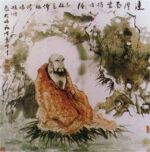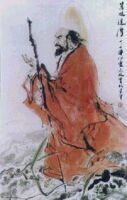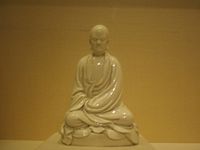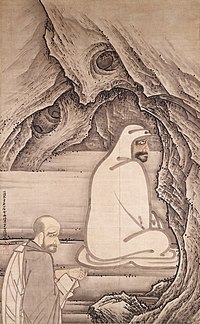U.S.S. Arizona Memorial
Honolulu, Hawaii
The date, December 7, 1941, really does live on in infamy, and the
Pearl Harbor Visitor Center makes sure the memory of Japan's attack on the United States will never fade. Visitor center exhibits provide fascinating context on the attack, and the center is the pickup point for free boat trip tickets to the U.S.S.
ArizonaMemorial.
Martin Luther King, Jr., National Historic Site
Atlanta, Georgia
Martin Luther King's birth home, in Atlanta's legendary Sweet Auburn neighborhood, is just one part of a historic site that also includes Ebenezer Baptist Church—where Dr. King preached as his father and grandfather had done before him—and Freedom Hall at the King Center. Tours of Dr. King’s birth home are led by a park ranger on a first-come, first-served basis. In-person registration is required for a tour of Freedom Hall.
Gettysburg National Military Park
Gettysburg, Pennsylvania
Drive and walk
the hallowed Pennsylvania soil where so many paid the ultimate price in July 1863. A self-guided audio tour, available at the visitor center, takes tourists through the three-day battle and around the fields to storied sites like Little Round Top and Cemetery Ridge, where stone walls, cannons, and monuments stand in silent contrast to the carnage that once unfolded here.
United States Capitol
Washington, D.C.
Spend a day with Congress on a behind-the-scenes tour of the
United States Capitol. Due to high demand and tight security, guided tours of this magnificent seat of government must be booked in advance. Get them online through the U.S. Capitol Visitor Center or through the office of your representative or senator.
Independence National Historical Park
Philadelphia, Pennsylvania
Within the walls of
Independence Hall's Assembly Room, the Continental Congress met, George Washington was appointed to command the Continental Army, the Declaration of Independence was adopted, and the U.S. Constitution was drafted. Needless to say, it's worth a visit. Due to demand, timed tickets are required to enter Independence Hall, except in January and February—and don't forget to see the nearby Liberty Bell.
Missions Trail
San Diego to Sonoma, California
When the Spanish began building their string of 21 California missions in the 18th century, the region was a wilderness under the nominal control of their monarch. Today El Camino Real, the road that connected them, has been replaced by modern California highways that allow easy driving along the entire
Missions Trail, from San Diego to Sonoma. Most of the adobes are active Catholic parishes, and visitors are welcome, though some charge fees for interior tours.
Alabama State Capitol
Montgomery, Alabama
This
Greek Revival landmark, used by the state legislature in Montgomery until the 1980s, has a storied history. In 1861 Jefferson Davis was sworn in as the Confederate States of America's first and only president in front of this building. A century later the 1965 Selma-to-Montgomery march for voting rights ended near the same spot.
Cumberland Gap National Historical Park
Kentucky, Tennessee, and Virginia
Settlers once poured through this first great natural gateway to the American West, following the herds of buffalo and tribes of Native Americans who preceded them through what are now Kentucky, Tennessee, and Virginia. Vistas, waterfalls, and rock formations are among the
site's natural wonders, while historic buildings evoke the lifestyles of pioneers and mountain communities.
The White House
Washington, D.C.
The White House isn't just the President's house: It belongs to every U.S. citizen. That means you're free to visit—but you can't just drop in unannounced. Public tours are available by contacting your representative in Congress and arranging a time to tour the mansion. Plan well in advance.
The Alamo
San Antonio, Texas
The San Antonio site of Davy Crockett’s and James Bowie's last stand was a key clash in the Texas Revolution. Fact and fiction sometimes mingle in tall tales of the battle, but there's no doubt that visitors to the old mission walk within the walls of an authentic American legend.
Santa Fe Plaza
Santa Fe, New Mexico
The
heart of old Santa Fe was once a crossroads where trade routes from Missouri met those from Mexico City. Here, Gen. Stephen Watts Kearny raised the U.S. flag to claim the territory during the Mexican War of 1846. Today the plaza bustles with Indian and Spanish markets, concerts, and all manner of community events.
Tombstone, Arizona
Stroll the boardwalks along historic Allen Street, scene of so much Old West violence and revelry, and you can almost hear the saloon pianos and gunshots. Actually you
can hear them, thanks to living history: On the second, fourth, and fifth Sundays of each month, the
Tombstone Vigilantes perform free gunfight and hanging shows while their counterparts, the Vigilettes, showcase period Tombstone fashions. A visit to Boothill Graveyard is also free.
The Freedom Trail
Boston, Massachusetts
Boston's impressive roster of colonial sites includes the Old North Church, the Old State House, the site of the Boston Massacre, and Bunker Hill Monument. You can see them all for free by simply following your feet along the red path of the city's
Freedom Trail. Costumed guides lead tours for additional fees, and some sites may charge entry fees.
Mesa Verde National Park
Colorado
It typically costs $10 to $15 per car (depending on the season) to see these spectacular cliff dwellings of the ancestral Pueblo people. As home to some of America's most important archaeological sites, dating to A.D. 600,
Mesa Verdeis worth every cent. But several times a year you can see it for free, including National Public Lands Day in September and the weekend of Veterans Day in November. (Entry fee is waved, but fees still apply for optional, ranger-led tours.)
Oregon Trail Ruts and Register Cliff
Guernsey, Wyoming
The legend of the Oregon Trail: So many wagons rolled westward in search of the American dream that they wore trench-like ruts into the sandstone that can still be seen today south of Guernsey, just off Rt. 26. Many settlers also left behind their “John Hancocks,” signing their names in nearby
Register Cliff to create a fascinating tableau of 19th-century graffiti.
Nez Perce National Historical Park Sites
Idaho, Montana, Oregon, Washington
The story of the
Nez Perce can be told on 38 sites scattered across four states. Among the sites of historical interest, Buffalo Eddy features petrogylphs and pictographs, Canoe Camp memorializes a spot where Lewis and Clark built new canoes, and Big Hole National Battlefield marks the bloodiest encounter of the 1877 Nez Perce War.
Baranof Castle State Historical Site
Sitka, Alaska
Sitka was the capital of Russian Alaska, and a good swath of that domain can be seen in the outstanding views from the hilltop
Baranof Castle State Historical Site, where first native Tlingit peoples and then Russians erected fortifications. Russia handed over Alaska to the United States on this hill in 1867. Interpretive panels tell the story.
Land of Lincoln
Illinois
Abraham Lincoln called Springfield, Illinois, home—and the only house he ever owned is now the
Lincoln Home National Historic Site. Other nearby (and free) haunts of Honest Abe include the Lincoln-Herndon Law Offices State Historic Site, where he once practiced, and the Old State Capitol, where he gave his “House Divided” speech in 1858.
Homestead National Monument of America
Nebraska
Experience settler life on the wide-open prairie at this
Nebraska site, which tells the story of westward expansion under the Homestead Act of 1862. The Palmer-Epard Cabin (1867) is actually luxurious by pioneer standards, and a hundred acres of restored tallgrass prairie is reminiscent of the storied habitat that once covered the Great Plains.
St. Paul's Chapel, Parish of Trinity Church
New York, New York
The
oldest public building in continuous use in New York City—George Washington attended services here following his 1790 inauguration—narrowly escaped destruction in the September 1776 blaze that broke out when the British retook New York. On September 11, 2001, the World Trade Center collapsed across the street, and the debris-filled but unharmed chapel became an oasis for Ground Zero recovery efforts. Exhibits tell the incredible 9/11 story.














